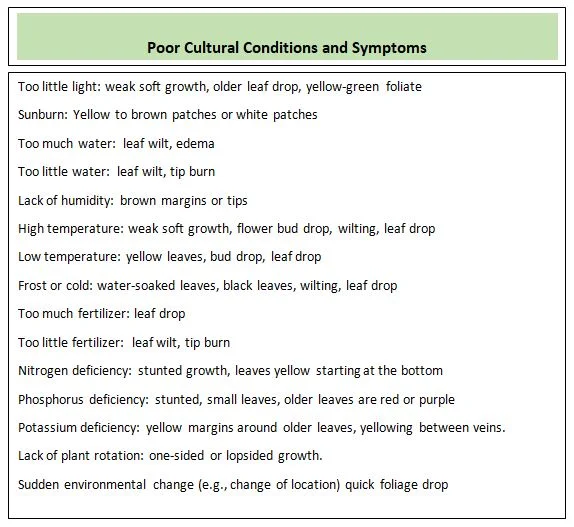Houseplants are a great way to brighten up our lives, particularly during dreary parts of the year such as winter and during extended gray or rainy periods. Indoor plants make us happy, add beauty to our homes and lives, give us an opportunity to interact with nature, satisfy emotional needs and improve our homes’ indoor air.
There are many choices among the variety of houseplants. (A University of Georgia Extension publication lists more than 200 different indoor plants.) Tropical plants comprise the majority of indoor plants. Other houseplants originate from Mediterranean and Savanna climates, monsoonal regions, and arid and semi-arid deserts. There are also a few temperate zone plants suitable as houseplants. Because of the large variety of indoor plants, it is important to consider the indoor location where your plant will be located (or stated succinctly the Right Place for the Right Plant). Below is a short chart which gives some examples of the right plant for specific locations in a house.
Several of the elements affecting success with houseplants are directly related to the location of the plant such as light, relative humidity, and temperature. Other elements affecting success are water, fertilization, soil and the container in which the plant is potted. The proper amount of light is the most important element for success. The failure to properly maintain these elements is called poor cultural conditions. Examples of poor cultural conditions are shown in the below chart with the types of symptoms your plant will display should it experience these poor cultural conditions.
As well as poor cultural conditions, diseases ( viruses, bacteria, and fungi) and insects (most common: scale, mealy bugs, aphids, and spider mites) can affect your houseplant’s health.
An excellent publication for more information about growing houseplants is titled “Growing Indoor Plants with Success”. It is published by the University of Georgia Cooperative Extension Program and is available at County Extension Offices or online from the UGA Extension website at: extension.uga.edu/publications.html.



